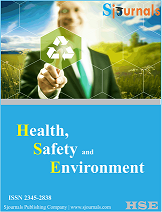Health safety of drinking water in the Dragash zone
Keywords:
Rural regions, drinking water, health security, analysis, samplesAbstract
The spread of water-related diseases are very common. Hydric epidemics are fast and explosive, so tendency for healthy drinking water should be constant. In the territory of Dragash live around 33997 inhabitants which are distributed in 35 villages. Characterized by average altitude over 1050 m and is rich in water resources throughout the seasons, but significant decrease during the summer months. In separate villages, there are 65 basins that make the accumulation and distribution of drinking water. None of them is treated before it enters the water distribution nets, except in the town of Dragash, whose basin is managed by the company of "Hidroregjioni Jugor". Evaluation of the quality of drinking water in the rural district of Dragash and security in terms of health for research physicochemical and microbiological parameters. The study was done using prospective epidemiological and analytical method. Water sampling from basins was conducted during 21 days. Samples were analyzed for physic-chemical parameters, and for microbiological analysis was used membrane filter method. Total of 130 samples were taken for analysis. 65 samples were analyzed for the physic-chemical level, and 65 other samples are analyzed in the microbiology field. Physico-chemical analysis indicated that 13 samples were above the maximum tolerated level and 52 within a maximum tolerated levels; increased levels of Iron and Manganese was encountered in 8 samples, while potassium permanganate in one sample. Microbiological analysis has provided 14 samples with bacterial presence or substandard and 51 within the standards. Important presence of pathogenic bacteria was found in rural basins of Bellobrad, Kosavë, Leshtane and Kukuljane. Residents from the territory of Dragash consume safe water in over 85% of cases, in a health plan. The presence of pathogenic bacteria and fecal origin in the village Bellobrad speaks for contamination by wastewater infiltration. Deviation from the standard settings is controllable, and therefore we need urgent measures by the competent authorities in terms of investment in the construction and reconstruction of water accumulator standards that provide drinking water healthy and safe.
References
Anyim, C. et al. Nov.2012-Jan. 2013. Evaluation of Water Quality Used for Drinking and Swimming Purposes in Ishiagu Community, Ebonyi State, Journal of ChBPH Sciences. 3 (1) , 581-587.
Census in Kosovo. 2011. Census population, family economy and housing in Kosovo 2011.Final results available at http://esk.rks-gov.net/
Center for Affordable Water and sanitation Technology: CAWST., 2009. Introduction to drinking water quality testing.
Cohen, J., Shovel, I.H., 1973. Coliforms, fecal coliforms, and fecal streptococci as indicators of water pollution. Water, Air, and Soil Pollution. 2, 85-95.
Dragash, 2012 (available at: http://kk.rks-gov.net/dragash/
Elisavet, A. et al. 2007. Physicochemical and microbiological characteristics of the potable water supply sources in the area of Kozani, Western Macedonia, Desalination. 213, 1-8.
Environment Protection Agency (EPA)., 2003. US Environmental Protection Agency Safe Drinking Water Act. EPA 1012-F-04-12.
EU Council ‘Drinking Water Directive (98/83/EC), November, 1998
Food and Agriculture Organization (FAO)., 1997. Chemical analysis manual for food and water, 5th Ed, FAO ROME. 20-26.
Geldreich, E., LeChevallier, Mark., 1999. Water Quality and Treatment: A Handbook of Community Water Supplies, Fifth Edition, McGraw-Hill, Inc., American Water Works Association.
Lehtola, M. J., Miettinen, I. T., Martikainen, P. J., 2005. Microbiological Quality Control in Distribution Systems. Water Encyclopedia.. 2, 243–247.
Narasimha,Rao, C. et al. Statistical Analysis of Drinking Water Quality and its Impact on Human Health in Chandragiri, near Tirupati, India.
Pritchard, M. et al. Biological, Chemical, and Physical drinking water quality from Shallow Wells in Malawi,
Rhoul-Amin. et al. 2012. Microbial Analysis of Drinking Water and Water Distribution System in New Urban Peshavar. Current Research Journal of Biological Science. 4 (6), 731-737.
Schaetz, R. J., Arbogast, A.F., 2003. People and environment. Simon and Shuster Custom Publishing, U.S.A. 245-269.
Shittu ,O.B., Olaitan, J.O., Amusa, T.S., 2008. Physico-chemical and bacteriological analyses of water used for drinking and swimming purposes in Abeokuta, Nigeria. African Journal of Biomedical Research. 1, 285-290.
Ukpong, E.C., Peter, B.U., 2012. Physico-Chemical and bacteriological analyses of drinking water in Ibeno local government area of Akwa Ibom State. Nigerian Journal of technology (NIJOTECH). 31(2), 116-127.
Welch, P. et al. Microbial quality of water in rural communities of Trinidad. Pan American Journal of Public Health. 8 (3), 172-80.
WHO, 2004. Guidelines for Drinking-water Quality, Geneva, 2004, Vol. 1

Downloads
Published
How to Cite
Issue
Section
License
Copyright (c) 2020 Fadil U. Kryeziu, Sejran Abdushi, Tahire Gjergji, Feim Mazreku, Violeta Xh. Kryeziu, Razije Lipoveci, Nurishahe Hulaj

This work is licensed under a Creative Commons Attribution-NonCommercial-NoDerivatives 4.0 International License.



